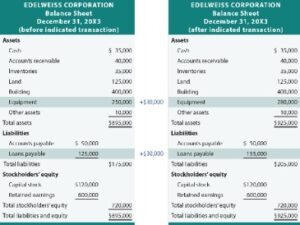
When you click on record deposits it will bring up all payments that have not been deposited yet (hence the term undeposited funds). When you record the deposits it is important to group the deposits to match your bank activity exactly. You select all the payments you want to deposit, select the appropriate bank account and select the date of deposit. The technical accounting of the record deposits function is credit undeposited funds and debit cash or checking.
Undeposited Funds account alternative
For a tutorial on how to use this account, we have put together a step-by-step instruction guide. While you are most likely familiar with the navigation system of QuickBooks, it may be difficult to find new accounts, especially if the system has been set up by someone other than yourself. Outsourcing your bookkeeping is more affordable than you would think. We save you money the moment you hire us by cutting out the expensive cost of hiring an in-house CFO.
If you do this, you’ll end up showing your income as double, which of course, can cause problems for you and your company’s books. To see if this has occurred, check the balance in the undeposited funds account against the balance sheet report. I would imagine that even those users still learning QuickBooks understand the basics of invoicing. Invoicing is how you charge your customers for your products or services. All of the accounting gets done “behind the scenes” in QuickBooks. If we have to get technical when you create an invoice you are crediting an income account (through the invoice charges) and debiting accounts receivable.
It’s unique to QuickBooks Online and its main purpose is to make bank reconciliations easier. Typically, when you make multiple bank deposits on one trip, the bank combines all individual checks into one transaction. In other words, what you see on your bank statement does not match what you see on your itemized bank deposit slip. Sometimes funds are “in transit” for less than a day, as when a customer pays you with cash or a check and you take the money to your bank at the end of the day. This is most common when you batch your deposits — only going to the bank once or twice a week — or when you accept a credit card payment and it takes a day or two for the funds to clear your bank account. Reconciliation is also the redundancy that is needed to ensure that no fraud is occurring in your business.
No wonder they thought they were being taxed unreasonably. It requires you to do an additional step in the form of multiple entries for each deposit (one to the undeposited funds account and the other membership dues definition and meaning to the right account). It is, however, useful for businesses that frequently get paid by check or cash and physically deposit the money to the bank instead of using mobile check deposits. Chances are you will occasionally receive payments from multiple customers and batch those into one deposit.
How to use QuickBooks Online’s Undeposited Funds account
Ordering printable deposit slips is easy on the Intuit marketplace. It’s good to periodically check your Undeposited Funds account and clear out any payments waiting to be moved. Learn about the Undeposited types of trade promotions Funds account and how to combine multiple payments together in QuickBooks. The “normal” balance for the Undeposited Funds account is $0. If you see a balance in Undeposited Funds on your balance sheet, you need to investigate.
Undeposited Funds Account in Quickbooks: What is it and How is it Used?
However, you need to properly credit each customer for their payment. Posting each payment to the Undeposited Funds account and then recording the deposit in QuickBooks Online allows you to do this. If you would rather have payments automatically post to a bank account than to an Undeposited Funds balance, turning off the feature is simple. QuickBooks doesn’t post these payments directly to your bank account because it knows there may be a delay before you deposit them. When they are deposited, QuickBooks allows you to pull them together into a single cash deposit on your bank register.

For many QuickBooks do-it-yourselfers, it’s possible to “get by” and decode the mysterious language of accounting-ese in the tool. You can look at the graphics within QuickBooks and make logical conclusions about how cash flows through your small business and how it should be reported. If you process invoice payments through QuickBooks Payments for Desktop, QuickBooks takes care of everything for you. direct and indirect labor cost definition explanation examples journal entry You don’t need to combine payments or move them to an account. Here’s how to put payments into your Undeposited Funds account before you combine them.
- Since there is not a bank account that supports undeposited funds or accounts receivables, you need to reconcile these accounts to income received, instead of a bank statement.
- We once worked with a law office that was doing about $5 million in annual revenue, with a client set up on a retainer fee of $850,000.
- When you put money in the bank, you often deposit several payments at once.
- The Undeposited Funds account is used to track and record such amounts.
- You then would have most likely credited sales/income when you directly deposited the payment into QuickBooks.
You received the check on the last day of the year, which happened to be a Saturday. Undeposited funds is useful for companies that collect money on a regular basis, but don’t actually deposit the money regularly. Large businesses, in particular, may delay depositing money for several days because it is tedious to deposit one check at a time throughout the working week. You have many accounting software options when it comes to keeping track of your business’s financial accounts. Many people enjoy using QuickBooks because it’s easy to use, has robust features, and can grow with their company.


Comment closed!